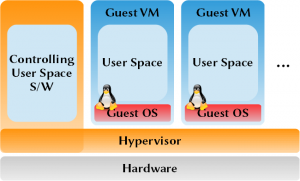I have created a VM with 2 hard disks. Did a standard installation of FreeBSD on the first hard disk (ada0) and decided to play around with ZFS on the second hard disk.
First of all, I destroyed any existing partitions on the second disk (warning the next command is dangerous, it will destroy all the data on the hard disk):
# gpart destroy -F ada1
I then went on to create a ZFS partition and pool. Note: I did not use the full disk size, in case I want to switch to RAID*. A prerequisite for ZFS in this case is that any newer disk should be at least the same size of the existing ones. This is not guaranteed by hard disk manufacturers that two 2TB hard disks have the same exact size.
# gpart create -s gpt ada1 # gpart show ada1 => 34 41942973 ada1 GPT (20G) 34 41942973 - free - (20G) # camcontrol identify ada1 ... protocol ATA/ATAPI-6 SATA 2.x device model VBOX HARDDISK ... sector size logical 512, physical 512, offset 0 DMA supported WDMA2 UDMA6
The 2 last commands gave me the partition size and sector size (in bold). I use this information to leave a bit of space after the ZFS partition. In addition, it is recommended to try to align the partitions to the sectors correctly. When using a physical hard disk for which you know the real sector size (note: sometimes the hardware is lying to you, which is the case of the 4K 512e HDD!!) you can directly use the corresponding alignment (i.e. 512 or 4k), but when using virtual HDD either as files (e.g. vdi, qcow2, etc.) or partitions (e.g. an LVM logical volume), it is better to use a 1MB aligment (1m), so adapt the “-a” option in the following command.
# gpart add -b 2048 -s 41932733 -a 1m -t freebsd-zfs -l disk00 ada1
ada1p1 added
# gpart show ada1
=> 34 41942973 ada1 GPT (20G)
34 2014 - free - (1M)
2048 41932733 1 freebsd-zfs (20G)
41934781 8226 - free - (4.0M)
# zpool create laug ada1p1
# zfs set compression=lzjb laug
# zpool status
pool: laug
state: ONLINE
scan: none requested
config:
NAME STATE READ WRITE CKSUM
laug ONLINE 0 0 0
ada1p1 ONLINE 0 0 0
errors: No known data errors
# df -Th
Filesystem Type Size Used Avail Capacity Mounted on
/dev/ada0p2 ufs 18G 2.6G 14G 15% /
devfs devfs 1.0k 1.0k 0B 100% /dev
laug zfs 19G 31k 19G 0% /laug
Et voilà, a nice ZFS pool which is using compression (lzjb algorithm).



